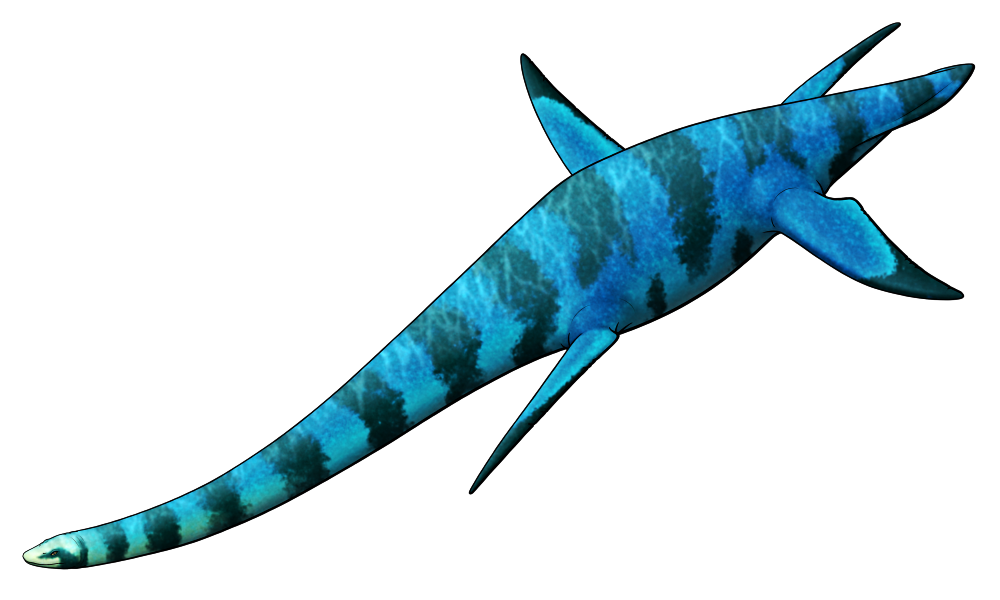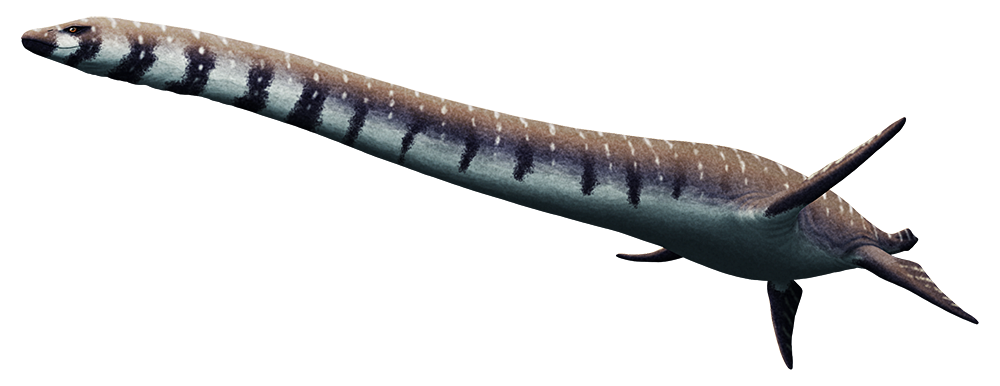Styxosaurus snowii here was one of the largest known elasmosaurids, named after the mythological river separating the worlds of the living and the dead.
Reaching around 11m long (36′), with half of that being entirely neck, it lived during the late Cretaceous period about 83-80 million years ago in what is now the American Midwest – a region that at the time was submerged under a large inland sea.
With pointy interlocking teeth in its proportionally tiny head, Styxosaurus would have fed on slippery aquatic animals like fish and cephalopods, possibly using its long neck to get up close to its targets while the bulk of its body remained out of sight in dark murky waters. Large numbers of gastroliths found in the stomach regions of some specimens would have been used to grind up the hard parts of prey items after they were swallowed whole.


